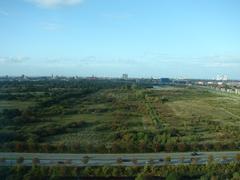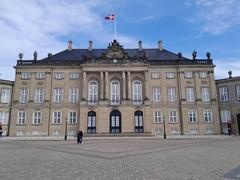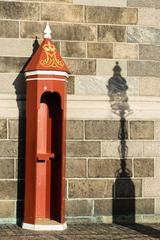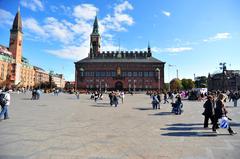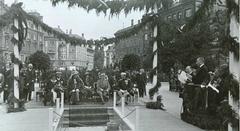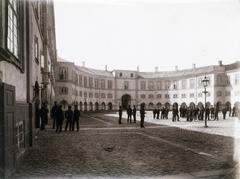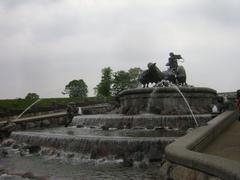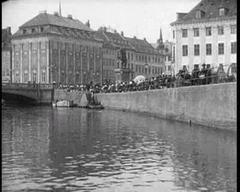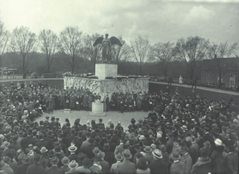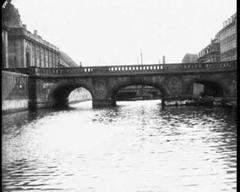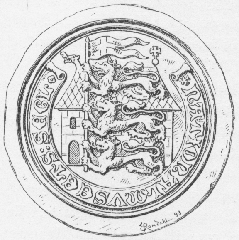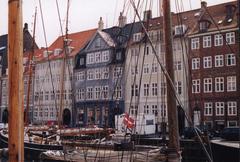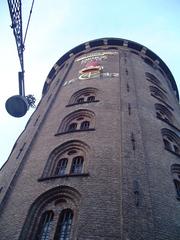Visiting The King’s Garden: Hours, Tickets, and Tips
Date: 17/07/2024
Introduction
The King’s Garden, also known as Kongens Have, is a remarkable historical and cultural landmark located in Frederiksberg, Denmark. Established in 1606 by King Christian IV, this garden has evolved through centuries, mirroring the shifting trends in horticultural design and reflecting Denmark’s rich royal heritage. Initially a Renaissance-style garden, it became an exemplar of Baroque magnificence under King Frederik IV in the 18th century, drawing inspiration from the renowned French garden designer André Le Nôtre (Visit Copenhagen, Denmark.dk). Today, The King’s Garden is a public space that continues to enchant visitors with its blend of historical significance, cultural vibrancy, and natural beauty. From the architectural splendor of Rosenborg Castle to the meticulously maintained flower beds and statues, the garden offers a unique glimpse into Denmark’s past while serving as a serene retreat in the heart of the city (Copenhagen Post, Frederiksberg Municipality). Whether you’re a history enthusiast, an art lover, or simply seeking a peaceful escape, The King’s Garden promises an enriching experience that highlights the enduring legacy of Denmark’s royal traditions.
Table of Contents
- Introduction
- History of The King’s Garden
- Origins and Early Development
- Transformation in the 18th Century
- The Influence of French Garden Design
- Public Access and Cultural Significance
- 19th and 20th Century Developments
- Preservation and Modern Enhancements
- Notable Historical Events
- Architectural and Artistic Highlights
- The Role of The King’s Garden in Danish Culture
- Visitor Information
- Travel Tips
- Nearby Attractions
- Special Events and Guided Tours
- Photographic Spots
- FAQ
- Conclusion
History of The King’s Garden
Origins and Early Development
Established in 1606 by King Christian IV, The King’s Garden is one of Denmark’s oldest and most significant gardens. Initially designed as a Renaissance-style garden, it was part of the larger Rosenborg Castle complex, serving as a royal residence (Visit Copenhagen).
Transformation in the 18th Century
In the 18th century, King Frederik IV transformed the garden into a Baroque masterpiece, introducing symmetrical layouts, elaborate parterres, and ornamental features like fountains and statues. This redesign mirrored the broader European trend towards Baroque garden design (Kulturarv).
The Influence of French Garden Design
The King’s Garden later drew inspiration from French garden design, particularly from André Le Nôtre, the architect behind the gardens of Versailles. The garden’s axial layout and use of water features reflect these French influences (Denmark.dk).
Public Access and Cultural Significance
Opened to the public in the late 18th century, The King’s Garden became one of the first royal gardens in Europe to do so. This move aligned with Enlightenment ideals, emphasizing the importance of public spaces for recreation and social interaction (Copenhagen Post).
19th and 20th Century Developments
The garden evolved further in the 19th and 20th centuries, incorporating elements of the English landscape garden style. This naturalistic and informal design contrasted sharply with earlier geometric styles (Frederiksberg Municipality).
Preservation and Modern Enhancements
Recent efforts have focused on preserving the garden’s historical integrity while enhancing amenities for contemporary visitors. Restoration projects have maintained historical features while improving accessibility and sustainability (Copenhagen Green).
Notable Historical Events
The King’s Garden has hosted numerous historical events, including the first public fireworks display in Denmark in 1770 (Danish Royal Collection).
Architectural and Artistic Highlights
Key highlights include the Hercules Pavilion and various statues and monuments commissioned by Danish monarchs (Statens Museum for Kunst).
The Role of The King’s Garden in Danish Culture
The garden is a living museum, symbolizing Denmark’s rich history and royal heritage. It continues to serve as a beloved cultural and recreational space (Visit Denmark).
Visitor Information
Visiting Hours
The King’s Garden is open daily from 7:00 AM to 10:00 PM. Hours may vary during holidays and special events.
Tickets
Admission to The King’s Garden is free. Special events and guided tours may have separate charges.
Travel Tips
Best Time to Visit
Spring and summer are ideal for visiting when the garden is in full bloom.
How to Get There
Easily accessible by public transport, with several bus and metro lines stopping nearby.
Accessibility
The garden is wheelchair accessible, with well-maintained paths and facilities.
Nearby Attractions
Rosenborg Castle
Located within the garden complex, it offers a glimpse into Denmark’s royal history.
Botanical Garden
A short walk away, it features a diverse collection of plant species.
Special Events and Guided Tours
The garden hosts various events throughout the year, including concerts, festivals, and guided tours. Check the official website for the latest updates.
Photographic Spots
The garden’s fountains, statues, and the Hercules Pavilion offer excellent photo opportunities. Early morning or late afternoon light provides the best conditions for photography.
FAQ
What are the visiting hours for The King’s Garden? The garden is open daily from 7:00 AM to 10:00 PM.
How much are tickets to The King’s Garden? Admission is free, but special events and tours may have separate charges.
Is The King’s Garden wheelchair accessible? Yes, the garden is wheelchair accessible with paved paths and ramps.
Are there guided tours available? Yes, guided tours are available. Visit the official website for more details.
Can I bring my dog to The King’s Garden? Yes, dogs are allowed but must be kept on a leash, and owners are responsible for cleaning up after their pets.
Conclusion
In conclusion, The King’s Garden in Frederiksberg stands as a testament to Denmark’s historical and cultural evolution. Its transformation from a royal Renaissance garden to a public Baroque masterpiece and later, an informal English landscape garden, showcases the dynamic interplay between horticulture and societal values over the centuries. Today, it remains a beloved cultural and recreational space, symbolizing Denmark’s commitment to preserving its heritage while providing a tranquil oasis for residents and visitors alike. With its rich history, architectural beauty, and vibrant cultural events, The King’s Garden continues to be a must-visit destination in Copenhagen. Plan your visit to experience the serene beauty and historical grandeur of one of Denmark’s most cherished landmarks (Visit Denmark, Copenhagen Green).
References
- Visit Copenhagen, 2024, Visit Copenhagen
- Denmark.dk, 2024, Denmark.dk
- Copenhagen Post, 2024, Copenhagen Post
- Frederiksberg Municipality, 2024, Frederiksberg Municipality
- Visit Denmark, 2024, Visit Denmark
- Copenhagen Green, 2024, Copenhagen Green
